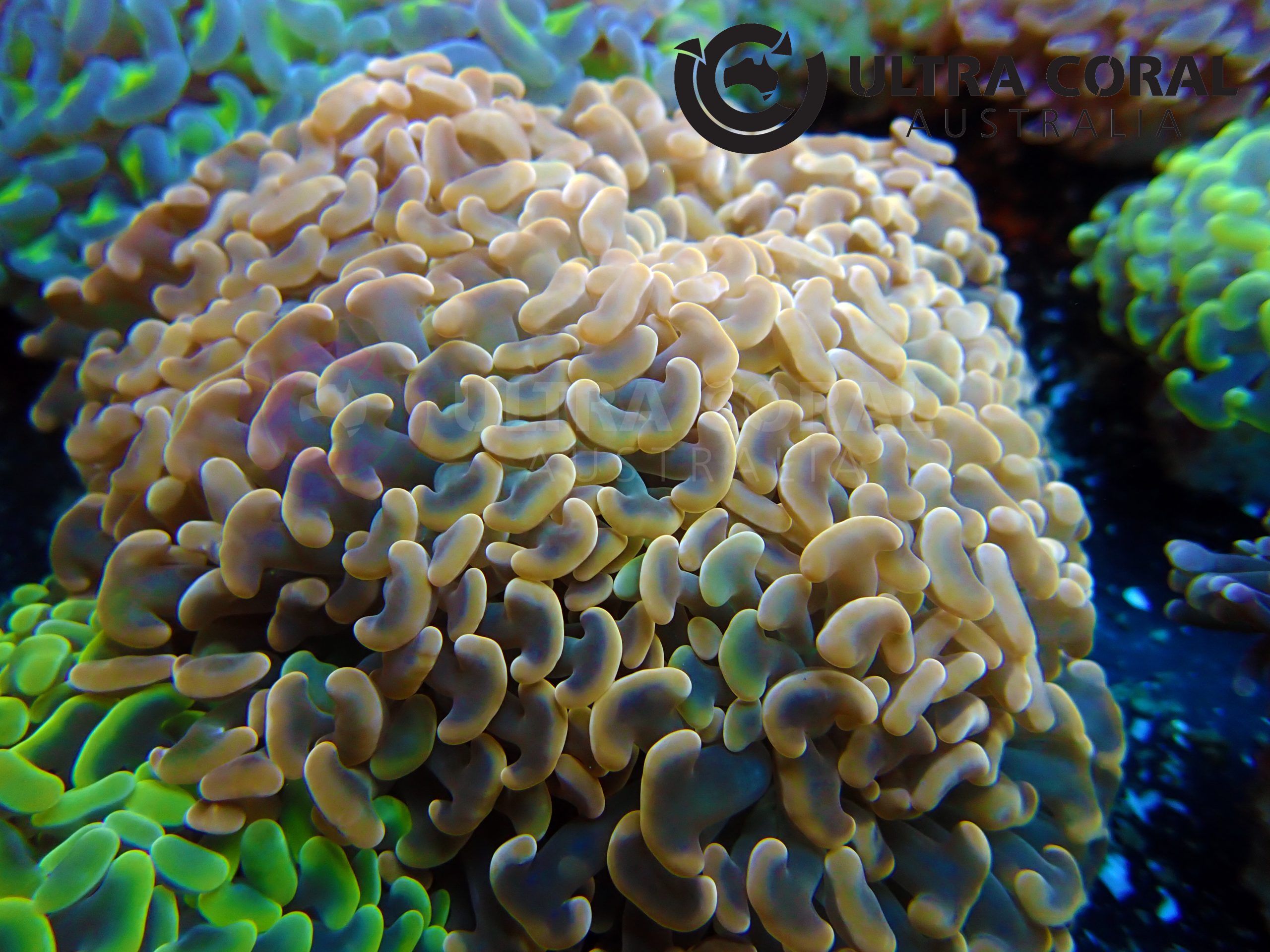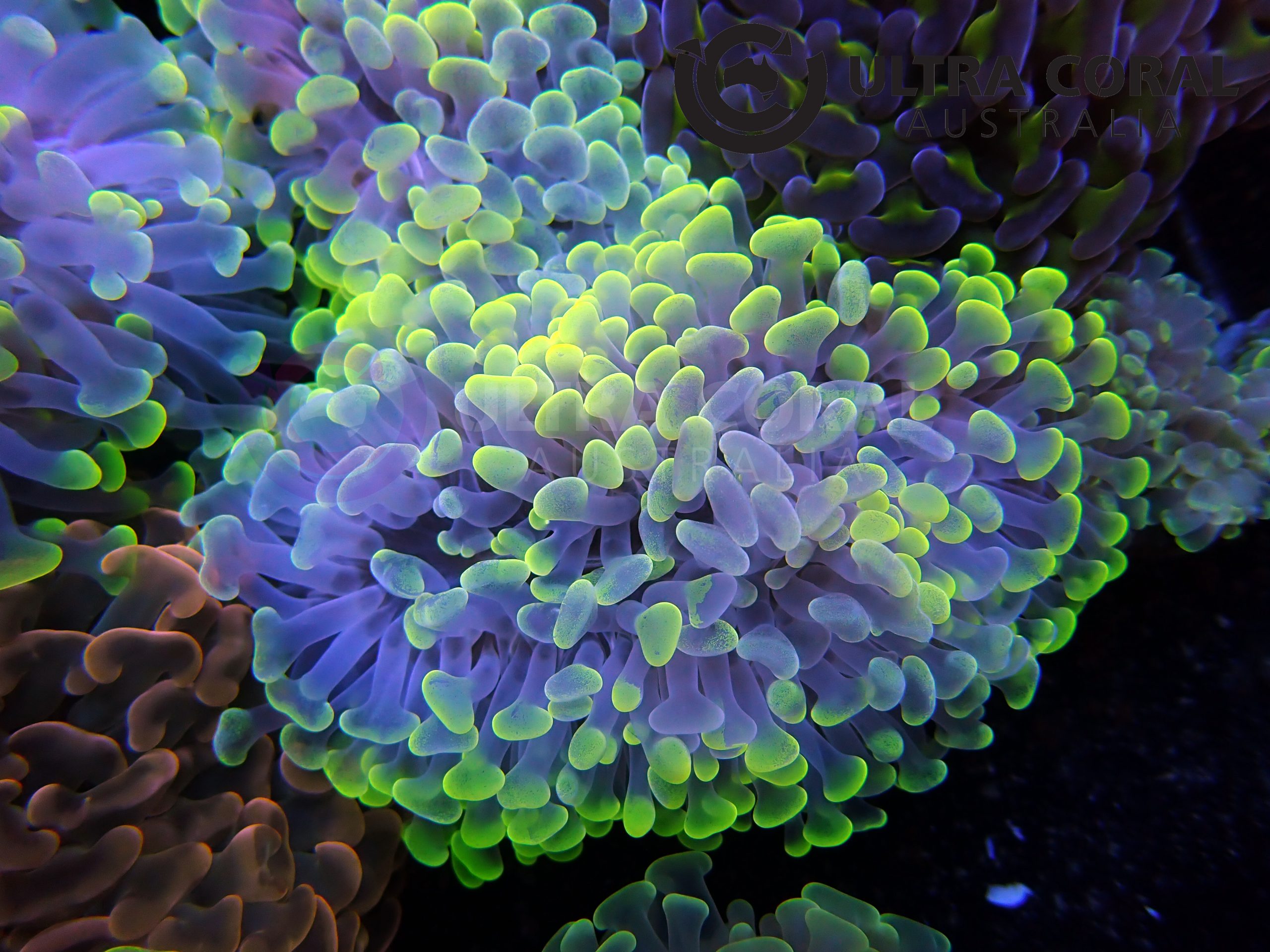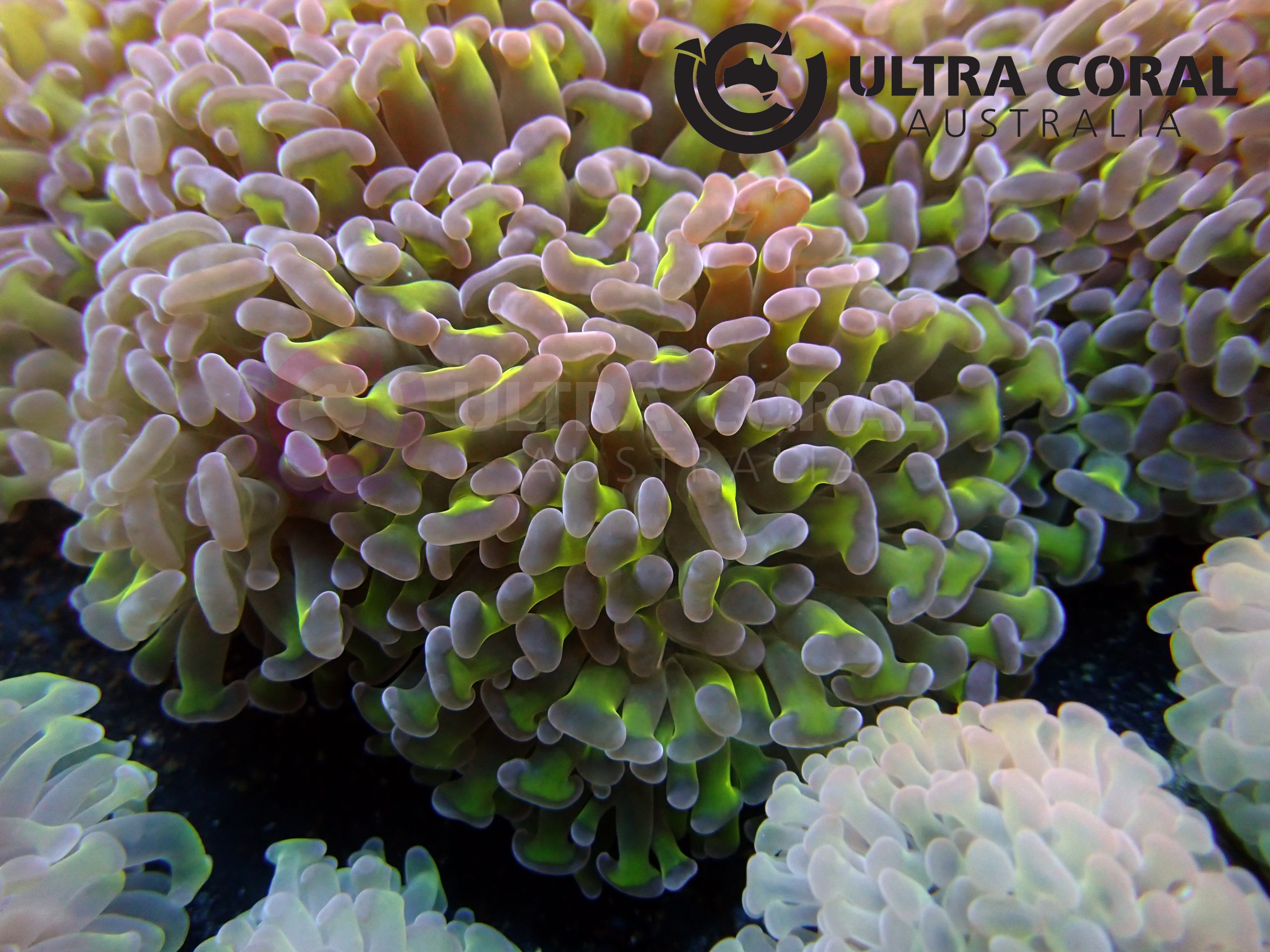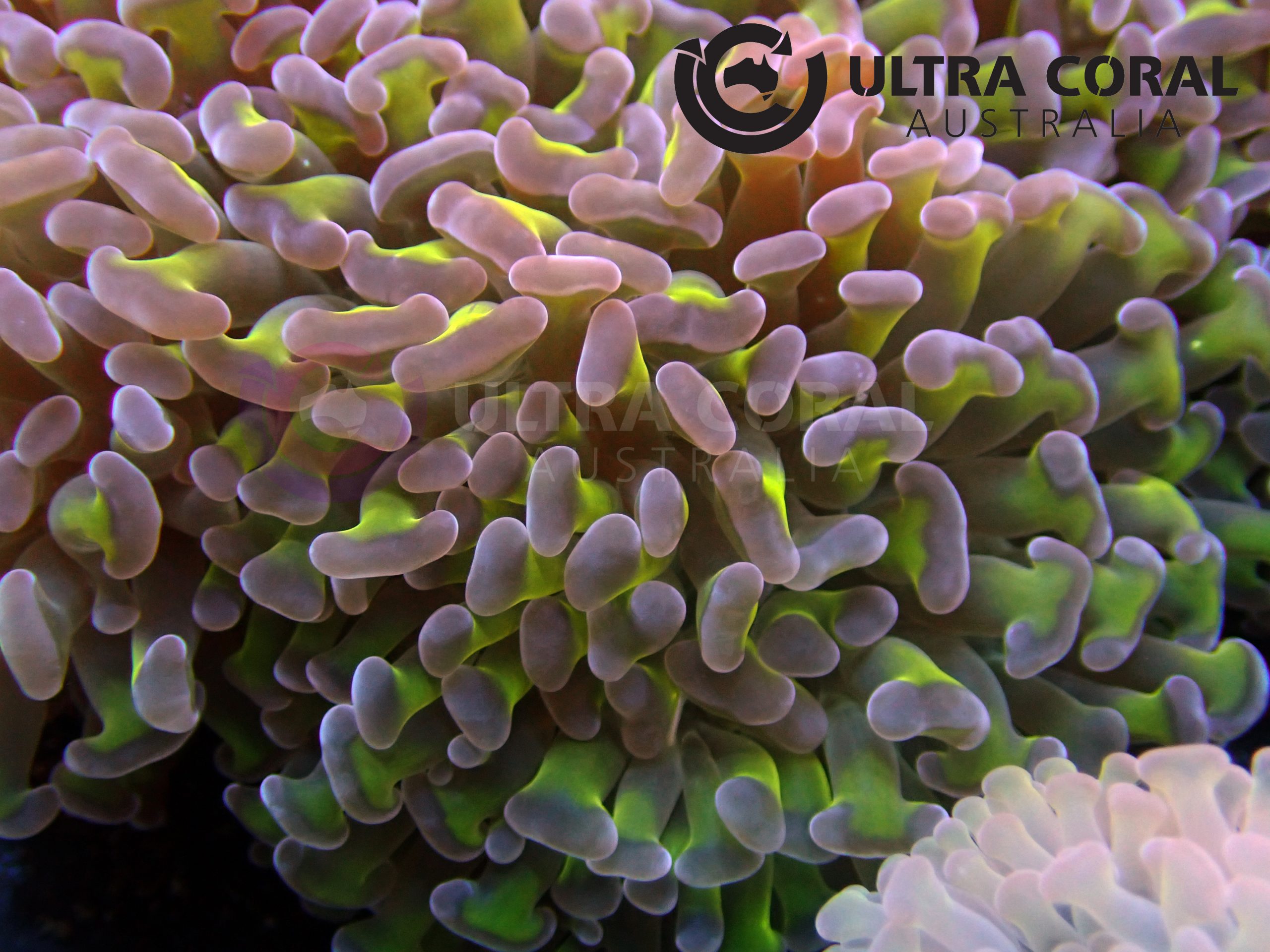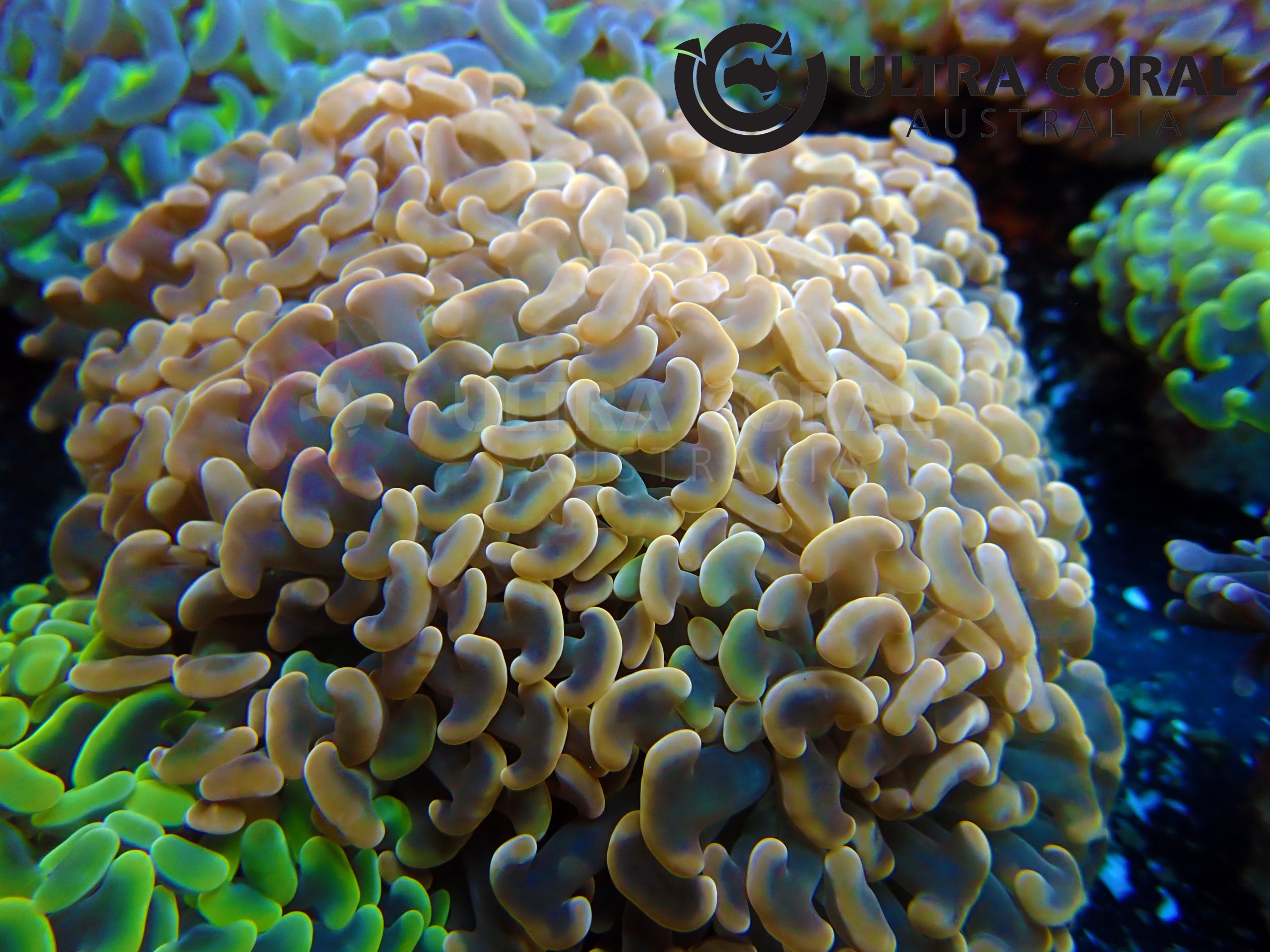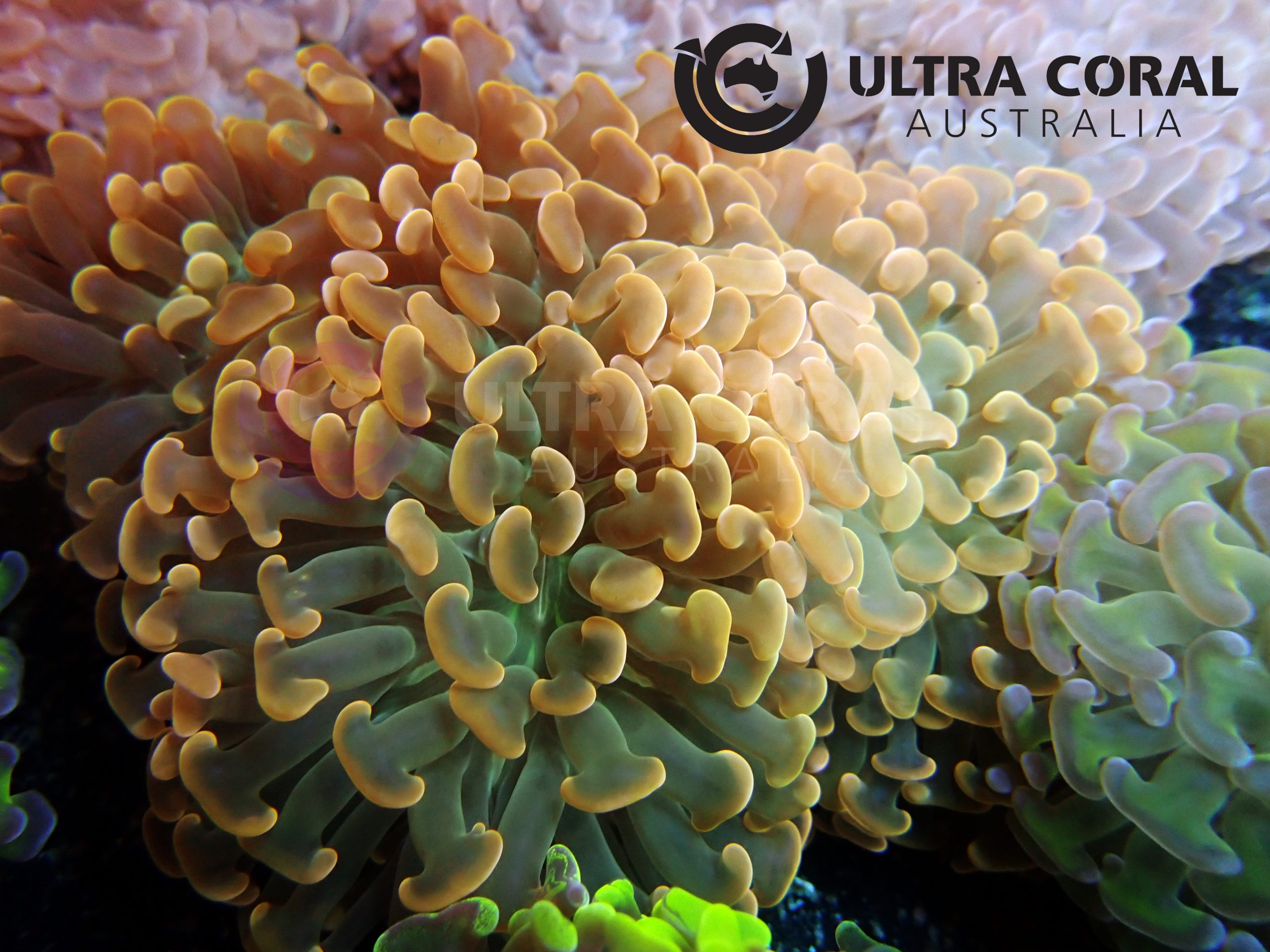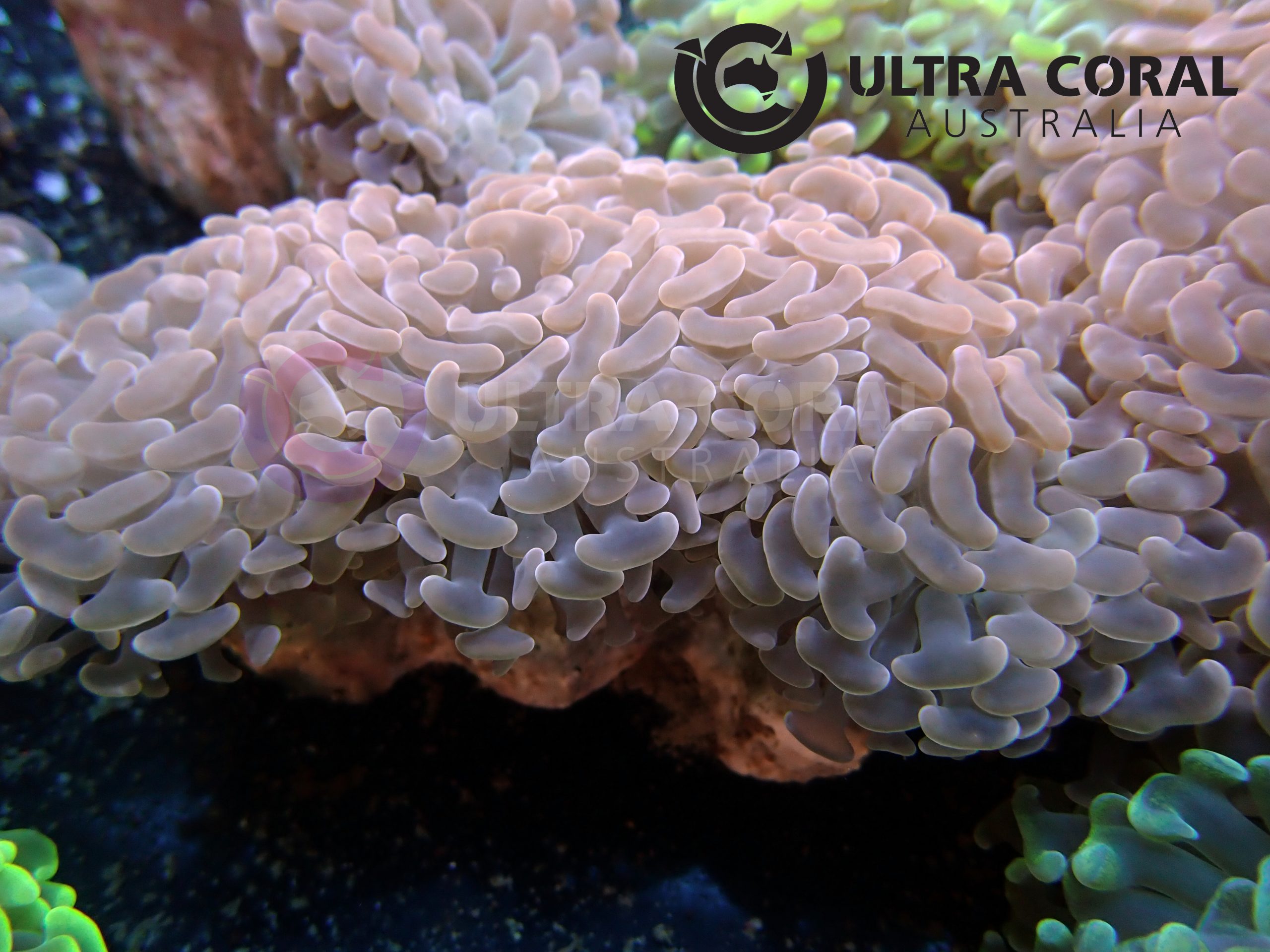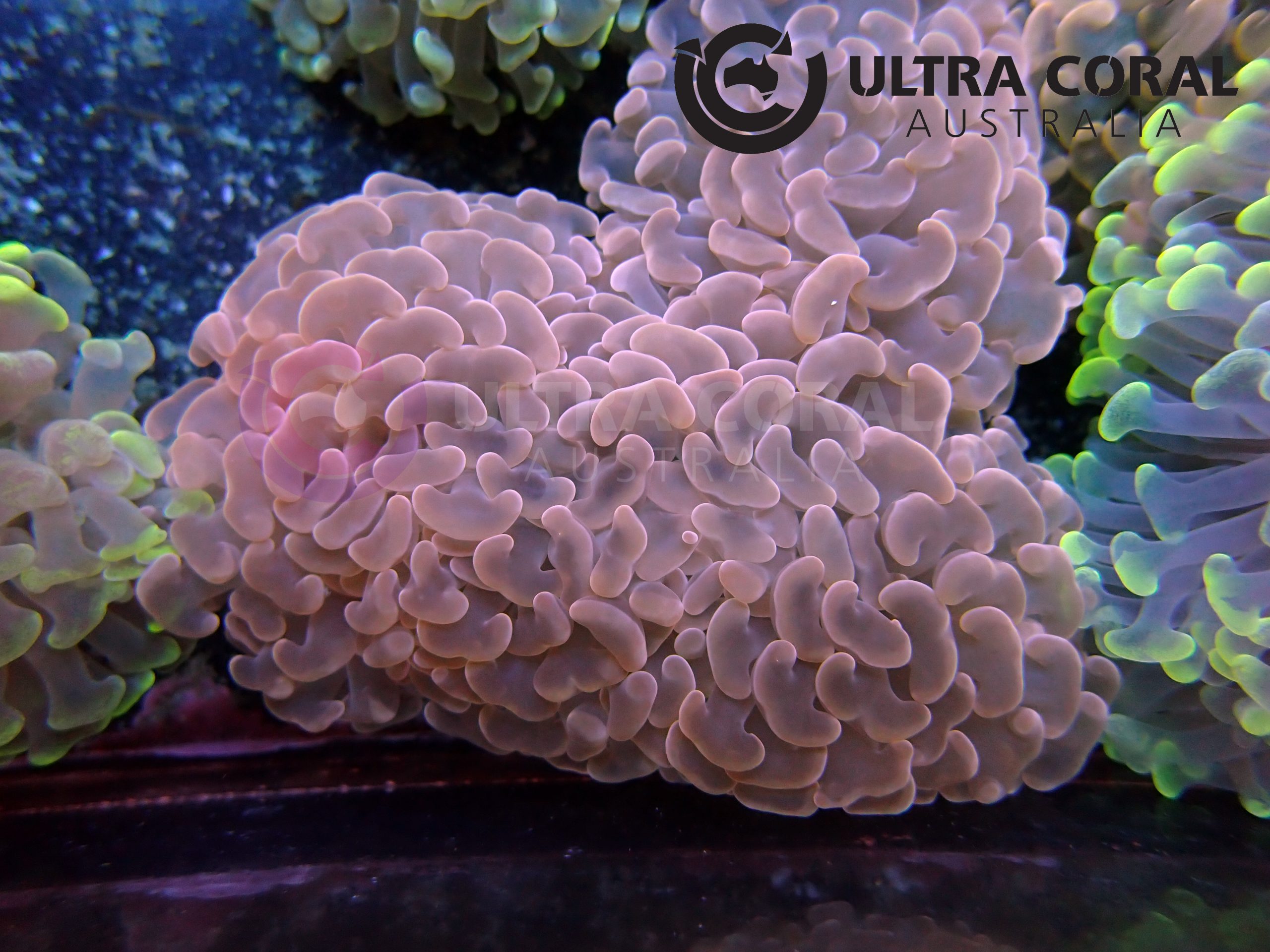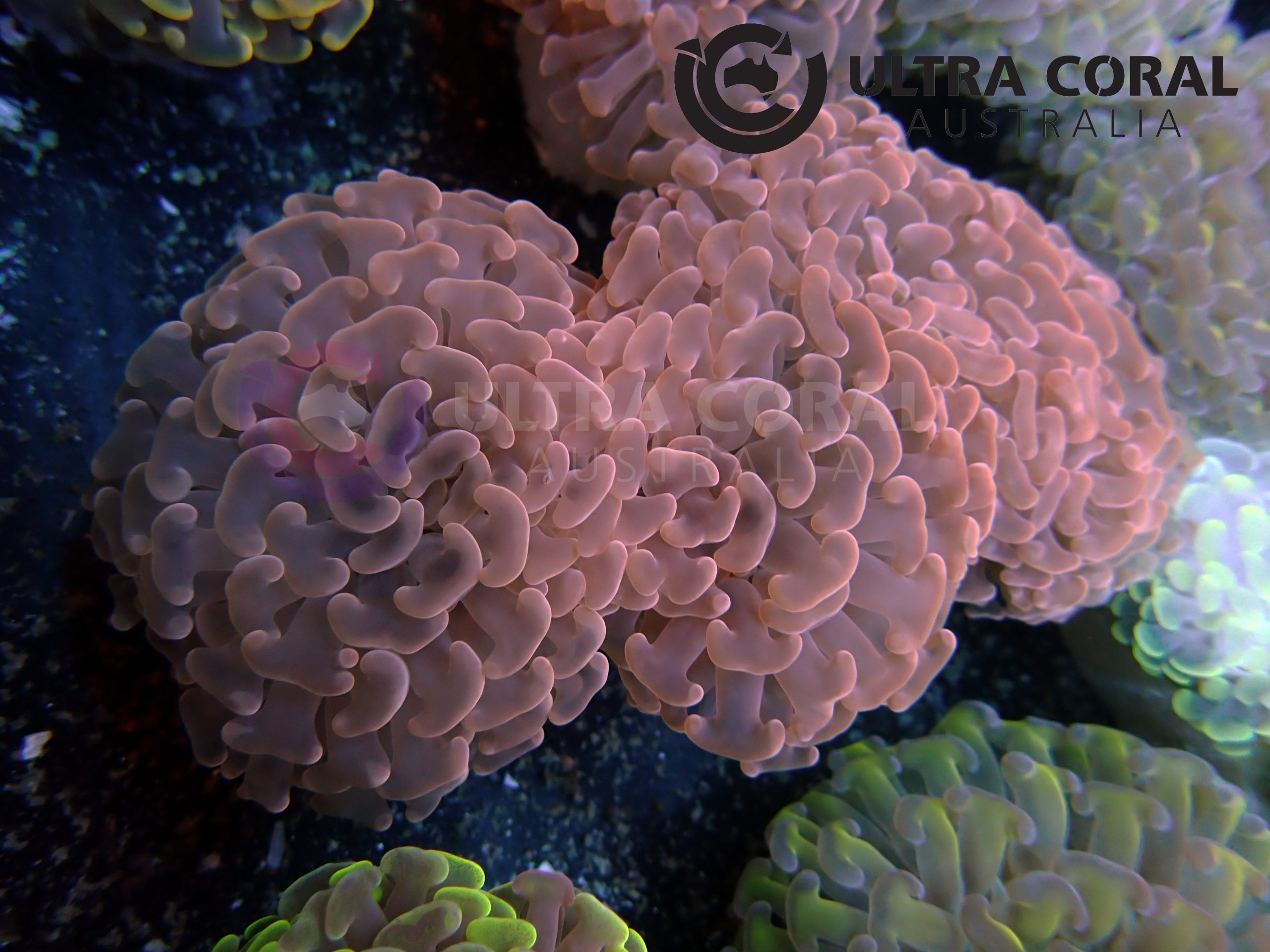Euphyllia ancora

Euphyllia ancora, commonly called Anchor Coral or Hammer Coral, has long and colourful tentacles with bean-shaped tips.
They have meandering wall-like structures with the polyps forming along the top, also forming ?valleys? throughout the surface. They develop large colonies with polyps that retract into the skeleton, though not completely.
The polyps extend during the day and only partially at night, but the skeleton is obscured unless the tentacles are contracted.
Common colours of Euphyllia ancora include pale brown, green, blue-gray, and orange tentacles. These are topped with bright green, pale cream, green or tan tips that curve, looking like an elongated ?C? from the top.
In the wild, large Euphyllia ancora colonies are found in shallow environments exposed to moderate wave action.
Basic Water Parameters
pH
8.0 to 8.3
Salinity
34 - 36ppt
Temperature
24.0 - 26.0 Celsius
Husbandry Requirements
Lighiting
180+ PAR - 110-175 PAR
Flow
Some turbulence required
Aggressiveness
Has long sweeper tentacles and/or strong stinging ability that can damage most other corals.
Acclimation Guide
- It is highly recommended to acclimate all corals to a new environment to prevent shocking corals.
- Place the corals in the water from the packing bags and slowly add the water from new environment (Dripping method is recommended).
- Use the water parameter above as a guide.
- When the vessel becomes full , replace the water with the new environment water by a small amount at a time.
- Ensure the water temperature matches with the new environment’s water.
- After the corals have spent adequate time in the acclimation water, gently place the corals to a new environment.
- It is recommended to place new corals under lower light intensity than usually required. Once corals show no signs of stress, it can be moved to higher lighting area gradually.”

